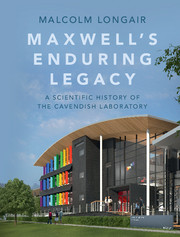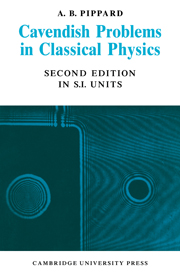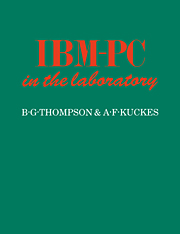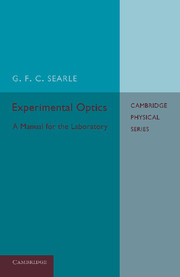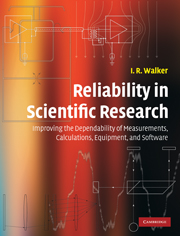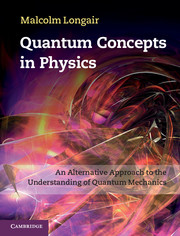Maxwell's Enduring Legacy
The Cavendish Laboratory is arguably the most famous physics laboratory in the world. Founded in 1874, it rapidly gained a leading international reputation through the researches of the Cavendish professors beginning with Maxwell, Rayleigh, J. J. Thomson, Rutherford and Bragg. Its name will always be associated with the discoveries of the electron, the neutron, the structure of the DNA molecule and pulsars, but these are simply the tip of the iceberg of outstanding science. The physics carried out in the laboratory is the central theme of the book and this is explained in reasonably non-technical terms. The research activities are set in their international context. Generously illustrated, with many pictures of the apparatus used and diagrams from the original papers, the story is brought right up to date with descriptions of the science carried out under the leadership of the very different personalities of Mott, Pippard and Edwards.
- A modern scientific history of arguably the most internationally famous physics laboratory
- Provides a challenging but accessible account of the physics and groundbreaking discoveries made throughout the years
- Brings the history right up to date by including recent developments in physics
Reviews & endorsements
'In what is patently a labour of love, the astronomer Malcolm Longair now gives us a comprehensive scientific history of the Cavendish in Maxwell's Enduring Legacy. Longair, who was the lab's head from 1997 to 2005, describes its inception well … Longair's history is in the form of a well-organized modern physics book, most of its twenty-two sections replete with charts, tables and lucid technical explanations presented neatly in boxes. Abundant diagrams, photographs, line drawings, floor-plans and facsimiles of historical documents give fascinating insights into the lab's development.' Graham Farmelo, Nature
'… a wonderful exposition of the many contributions made by this renowned institution … written by one of its recent leaders … The author writes with great erudition on the incredible range of essential research projects that were conducted at this famous laboratory. There are helpful notes, indexes, and references.' N. Sadanand, Choice
'… any physicist (from within or outside the Laboratory) will surely find a wealth of information of interest.' Guy Pooley, The Observatory
'One must say that the Cavendish is extremely fortunate that one of its recent heads has had the vision, energy and talent to meet the formidable challenge of chronicling the evolution of the Cavendish into the world-leading institution … This magnificent book is a fitting tribute to past and present staff and students at the Cavendish. … The focus has naturally been on events in the Cavendish itself. However, the author properly locates those events in the wider international context. Moreover, he is not averse to offering supporting physical explanations, as well as mathematical expositions where appropriate … Having expertly traced the history of the Cavendish - which has required much archival research - the author closes with a survey of the highly diverse activities of today's Cavendish and signals also the future of another re-building of the Cavendish planned for completion in 2020. The legacy of Maxwell would appear to be safe for another 140 years.' K. Alan Shore, Contemporary Physics
'Besides the accuracy of the scientific descriptions and the sharpness of the ideas, this book inaugurates a useful compromise that might inspire future science historians … the history of the Cavendish shows that lasting progress can come from diversity of opinion, the inclusiveness of practices and mutual respect between fundamental sciences. How can we sum up the secret of the scientific successes described in this book? A tentative recipe might be unity in necessary things, freedom in doubtful ones and respect for every honest scientific endeavour.' Massimo Giovannini, CERN Courier
Product details
July 2016Hardback
9781107083691
650 pages
254 × 193 × 33 mm
1.62kg
93 b/w illus. 140 colour illus. 35 tables
Available
Table of Contents
- Preface
- Acknowledgements
- Figure credits
- Part I. To 1874:
- 1. Physics in the nineteenth century
- 2. Mathematics and physics in Cambridge in the nineteenth century
- Part II. 1874 to 1879:
- 3. The Maxwell era
- Part III. 1879 to 1884:
- 4. Rayleigh's Quinquennium
- Part IV. 1884 to 1919:
- 5. The challenges facing J. J. Thomson
- 6. The J. J. Thomson era, 1884–1900 - the electron
- 7. The Thomson era, 1900–19 - atomic structure
- Part V. 1919 to 1937:
- 8. Rutherford at McGill and Manchester Universities - new challenges in Cambridge
- 9. The Rutherford era - the radioactivists
- 10. Rutherford era - the seeds of the new physics
- Part VI. 1938 to 1953:
- 11. Bragg and the war years
- 12. Bragg and the post-war years
- Part VII. 1953 to 1971:
- 13. The Mott era - an epoch of expansion
- 14. The Mott era - radio astronomy and high energy physics
- 15. The Mott era - the growth of condensed matter physics
- Part VIII. 1971 to 1982:
- 16. The Pippard era - a new laboratory and a new vision
- 17. The Pippard era - radio astronomy, high energy physics and laboratory astrophysics
- 18. The Pippard era - condensed matter physics
- Part IX. 1984 to 1995:
- 19. The Edwards era - a new epoch of expansion
- 20. The Edwards era - new directions in condensed matter physics
- 21. The Edwards era - high energy physics and radio astronomy
- Part X. 1995 to present:
- 22. Towards the new millennium and beyond
- 23. The evolution of the New Museums site
- Notes
- Bibliography
- Author index
- Index.

